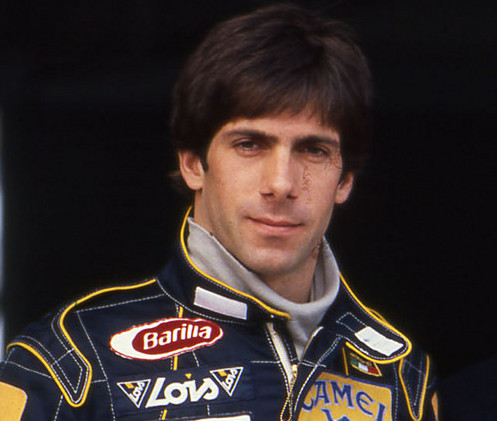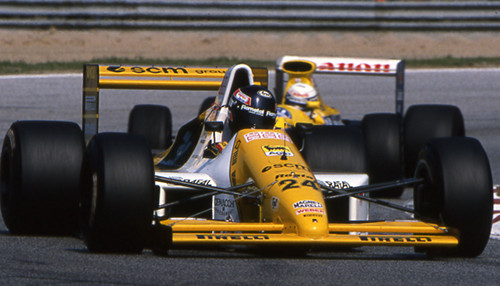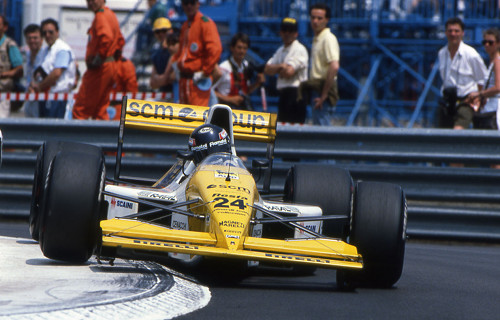Paolo Barilla
by Salvo Toscano
Italians have always been very passionate about pasta and racing cars, Paolo Barilla put the two together. Paolo spent all of his short Formula 1 career with Minardi. His family owns the Barilla Group, a worldwide food empire, founded by Paolo's great-grandfather in 1877. Barilla is the world's biggest pasta maker. Young Paolo, like many others, started his racing career with karts. He won his 100cc karting category in the 1976 Italian championships, moving on to Italian F3 with the famous Ravarotto team, where he won three races. In 1982 he joined Gian Carlo Minardi's European F2 team, lining up next to the young and talented Alessandro Nannini. He scored no points. He switched to sports cars in 1983, joining Scuderia Mirabella, usually driving his Lancia LC2 with Giorgio Francia. His best result was a 6th place at Spa.


1984 started with a 3rd and a 4th place at Monza and Silverstone, in a Lancia LC2-84 shared with Mauro Baldi. There was also a 3rd with Alessandro Nannini at the Nurburgring, and a 2nd at Kyalami with Bob Wollek having started on pole position. It was a good season, but rivals Porsche were too strong. The year after, Paolo switched to Porsche. His greatest moment without a doubt was claiming victory at Le Mans, with Klaus Ludwig and John Winter. Paolo also took part in two Interseries races later in the year in his 956, taking victory convincingly in both races.
In 1986 and 1987 he continued racing sports cars, gaining victories and podiums. He then moved on to the Japanese Sports Prototype Championship. In those years he also raced in Formula 3000, with ups and downs, until 1989. In 1989 Minardi had an extraordinary season, with their little hero Pierluigi Martini, performing outstandingly in qualifying with the help of Pirelli tyres. In Portugal Martini had the honour of leading a GP for one lap, the first and only time for a Minardi. In that very race however, Martini bruised one of his ribs when he fell from the stairs of the team's truch, and that injury got worse a week later at Jerez. This gave Barilla the chance to replace Martini at Suzuka, also because of his good knowledge of the Japanese track.He qualified in 19th position, doing better than the likes of Mauricio Gugelmin, Eddie Cheever, Derek Warwick and Jonathan Palmer. Unfortunately during the race, his clutch failed on him on the opening lap. At the next race, in Australia, the great Martini came back and qualified third on the grid just behind the McLarens.

In 1990 Luis Perez Sala left Minardi having found it extremely difficult to keep up with Martini. Barilla joined the team on a full-time basis but he soon realised how hard it would be to have Martini as a team mate. In the first race at Phoenix, Martini qualified second, the best result for a Minardi ever, Barilla qualified a respectable 14th. The Minardis were reasonably competitive during the first races but performance deteriorated as the season progressed. The car was not as brilliant as the year before and the Pirelli tyres did not live up to expectations either. To make matters worse, the tall and athletic Barilla did not fit well into the tiny cockpit of the car. An inconsistent season, with no points. Paolo's 11th place in Imola was his best result He also failed to make it onto the grid a few times and for the last two races Minardi replaced him with fellow Italian Gianni Morbidelli. After two years of F1, Barilla continued racing sports cars until 1997. He also competed in the Dakar Rally. Today Paolo is the vice-president of the Barilla Corporation (having been CEO for a short time).